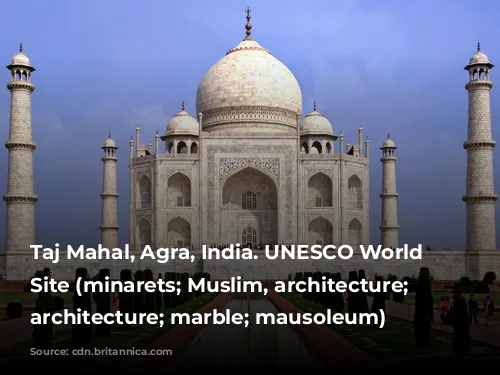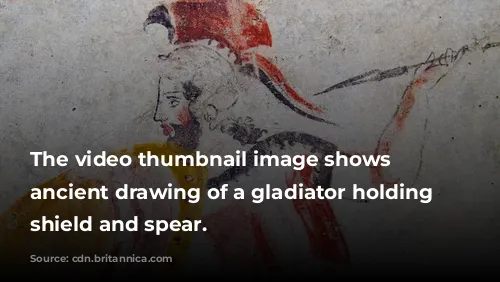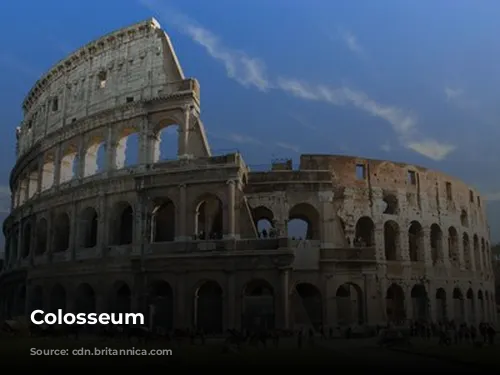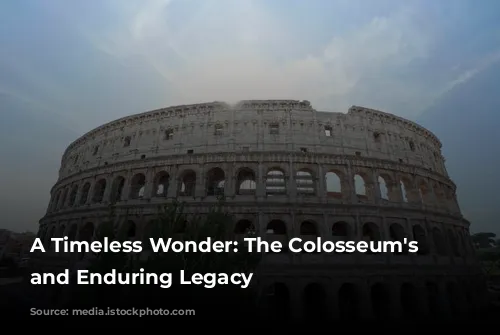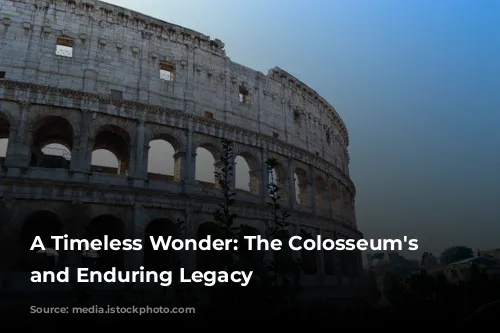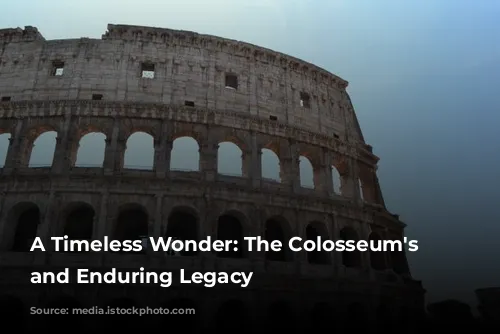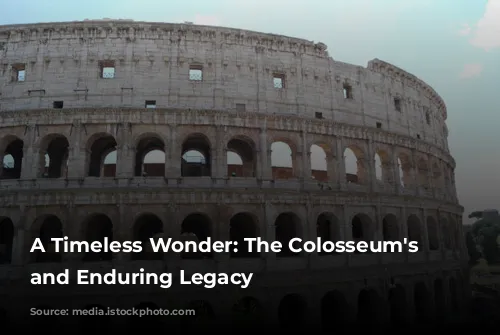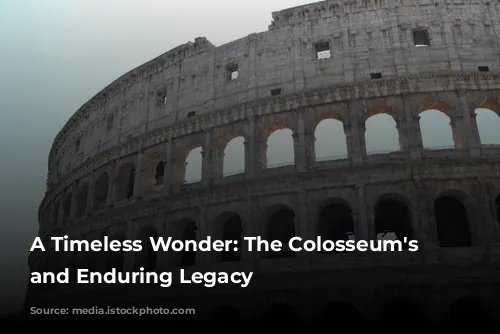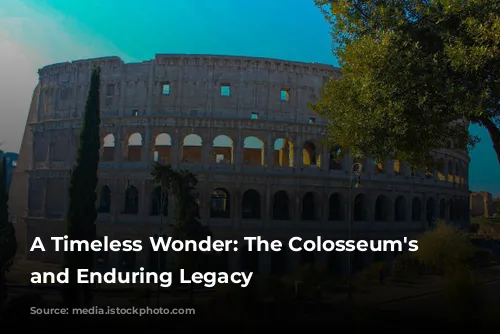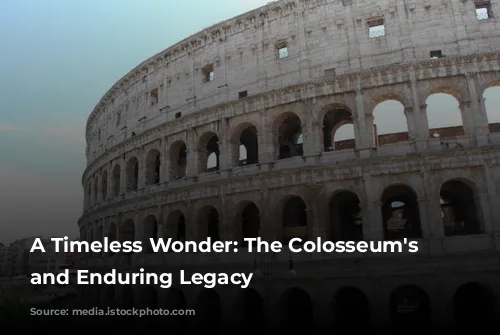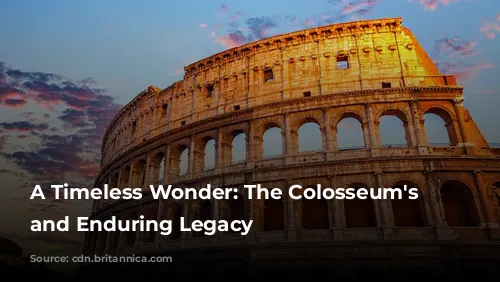The Colosseum, a towering symbol of ancient Rome’s architectural brilliance, stands as a testament to the empire’s ingenuity and grandeur. More than just a historical relic, the Colosseum continues to captivate visitors from around the globe, generating significant revenue for Italy. In 2018 alone, the Colosseum, Roman Forum, and Palatine Hill collectively drew in over $63.3 million (€53.8 million), solidifying their position as Italy’s most lucrative tourist attraction.
The Colosseum’s story is one of resilience and transformation, a journey from its glorious beginnings to periods of decline and eventual revival. After the fall of the Western Roman Empire, the Colosseum fell into disrepair. Its once-magnificent structure was repurposed by warring families, with the Frangipane and Annibaldi claiming it as their fortress. In the late 15th century, Pope Alexander VI further stripped the Colosseum of its grandeur, allowing it to be used as a quarry. For over a thousand years, this architectural marvel endured neglect, its once-glorious features slowly disappearing. However, in the 1990s, state-funded restoration efforts breathed life back into the Colosseum, ensuring its continued existence for generations to come.
A Monument to Power and Entertainment
The Colosseum’s construction was a grand project, reflecting the emperor’s ambition to restore Rome’s glory. Following the chaotic year of the four emperors in 69 CE, Emperor Vespasian, seeking to revitalize Rome, initiated the building of the Colosseum. This ambitious project aimed to provide a grand entertainment venue for the Roman people, a place where gladiatorial combats, animal hunts, and even mock naval battles could be staged.
The Colosseum’s construction began under the reign of Emperor Vespasian between 70 and 72 CE, with its completion celebrated in 80 CE by his son, Titus. The Colosseum’s dedication was marked by a 100-day spectacle of games and festivities. Vespasian’s successor, Domitian, added the final touch in 82 CE, completing the Colosseum’s fourth story. Interestingly, the Colosseum’s construction was financed by plunder from Titus’s conquest of Jerusalem in 70 CE, and the labor force included enslaved Jews from Judea.
A Colossal Structure
The Colosseum is more than just a name; it stands as an architectural marvel, an amphitheater built to awe and entertain. Known as the Flavian Amphitheater, this elliptical structure is a testament to Roman ingenuity, constructed using stone, concrete, and tuff. Standing four stories tall at its highest point, the Colosseum measures a staggering 620 by 513 feet (189 by 156 meters), with the capacity to hold a massive crowd of up to 50,000 spectators. The Colosseum’s fame is inextricably linked to the gladiatorial combats that took place within its walls, adding to its allure and legend.
The Colosseum’s construction involved innovative techniques, utilizing a complex system of barrel and groin vaults, a far cry from the earlier amphitheaters often built into hillsides. The Colosseum’s three main stories feature arcades framed by engaged columns in the Doric, Ionic, and Corinthian orders. The structure’s upward arrangement of columns became a cornerstone of the Renaissance codification known as the assemblage of orders. Travertine forms the main structural framework and façade, while volcanic tufa makes up the secondary walls, and concrete constitutes the inner bowl and arcade vaults.
A Stage for Spectacular Shows
The Colosseum was meticulously designed to provide both entertainment and comfort for its massive audience. The amphitheater’s seating capacity was designed to accommodate 50,000 spectators, who were shielded from the sun by a massive, retractable awning called a velarium. Supporting masts extended from corbels built into the Colosseum’s top story, requiring hundreds of Roman sailors to manipulate the rigging that extended and retracted the velarium. The Colosseum witnessed countless spectacles, from the thrilling hand-to-hand combats between gladiators to encounters between men and animals and even mock naval engagements. However, the Colosseum’s role in the martyrdom of early Christians remains uncertain.
Through the centuries, the Colosseum has been transformed from a grand arena to a religious sanctuary and, eventually, a fortress. In medieval times, the Colosseum served as a church before being repurposed by the Frangipane and Annibaldi families as their fortress. Unfortunately, the Colosseum suffered damage from lightning, earthquakes, vandalism, and pollution. The marble seats and decorative materials were gradually stripped away, leaving the Colosseum as a mere quarry for over a thousand years.
A Legacy of Endurance
The Colosseum’s story is a testament to human resilience, with its enduring appeal attracting millions of visitors each year. The Colosseum’s preservation efforts began in earnest in the 19th century, spearheaded by Pope Pius VIII, with further restoration undertaken in the 1990s. Today, the Colosseum stands as one of Rome’s most iconic landmarks, attracting close to seven million visitors annually. Regularly changing exhibitions relating to the culture of ancient Rome enhance the visitor experience, offering a glimpse into the past and deepening the understanding of this enduring symbol of Roman civilization.
From its beginnings as a grand arena to its journey through neglect and subsequent revival, the Colosseum continues to captivate and inspire, offering a unique window into the world of ancient Rome. As one of the few surviving structures from the Roman Empire, the Colosseum stands as a powerful reminder of the empire’s legacy and its lasting influence on the world.
